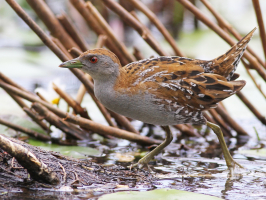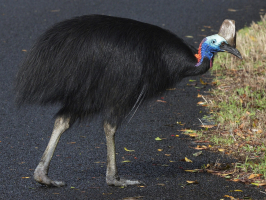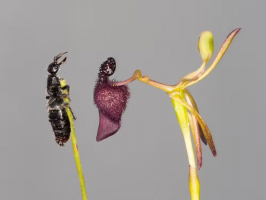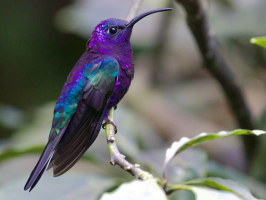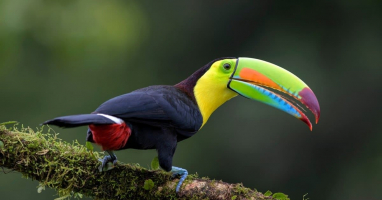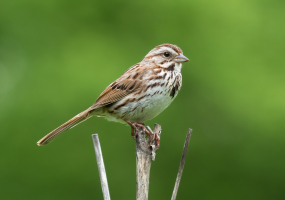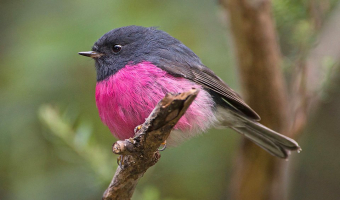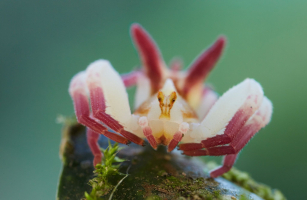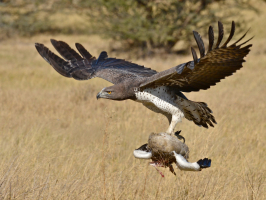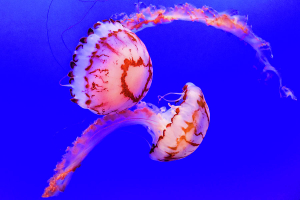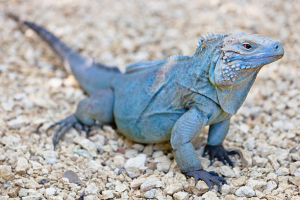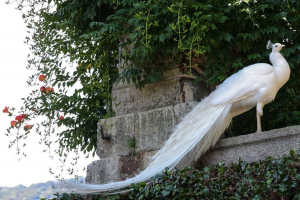Top 10 World's Most Amazing Desert Birds
Desert areas have distinctive climatic, flora as well as fauna traits of their own. In many areas of the desert, there are kilometers without a drop of water. ... read more...Yet despite this harsh environment, desert birds are able to live and grow. They are among the earth's inhabitants with the greatest adaptability. Below is a list of the most amazing desert birds in the world, let's find out!
-
Gambel's Quail (Callipepla gambelii) is a small ground-dwelling bird in the new world quail family. It lives in the desert regions of Arizona, California, Colorado, New Mexico, Nevada, Utah, Texas, and Sonora as well as in Chihuahua, which borders New Mexico, and the Baja California region near the Colorado River. William Gambel, a naturalist and explorer of the Southwest of the United States in the nineteenth century, is honored with the name of the Gambel's quail.
The top knots and scaly undersides of the Callipepla gambelii birds make them simple to identify. The majority of the Gambel's quail's body is covered in bluish-gray plumage, while males have black faces, white stripes above their eyes, and copper feathers on top of their heads. The bird is typically 28 cm long and has a 36–41 cm wingspan. Their long, featherless legs are paired with very small, rounded wings. Plant material and seeds make up the majority of its diet.
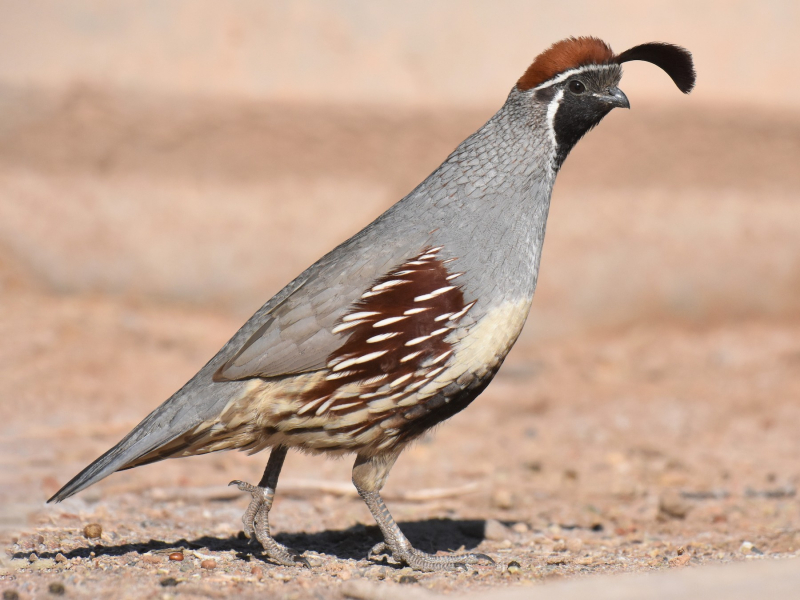
eBird 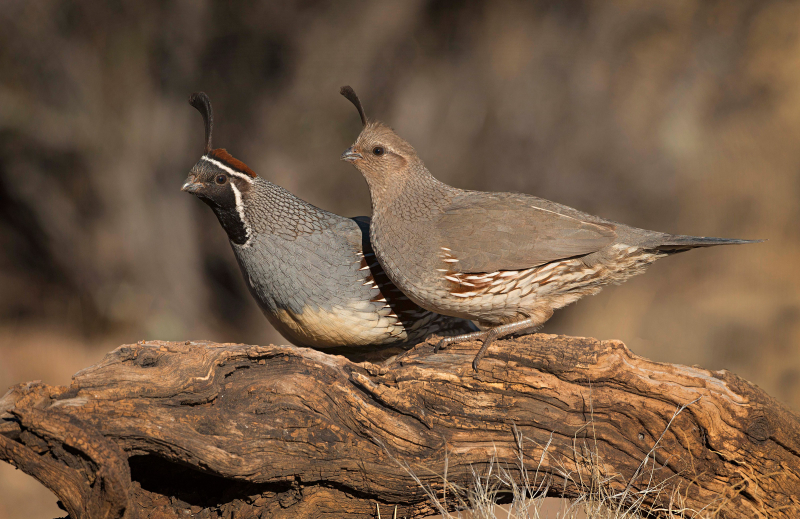
National Audubon Society -
The Desert Lark (Ammomanes deserti) breeds in deserts and semi-deserts from Morocco to western India. It grows to a length of 16 to 17 cm and has a huge head and long bill. While there is considerable geographic diversity, the sexes are similar. It has drab plumage that ranges in color from relatively pale to rather black. While the plumage of different subspecies may vary, so too may individuals within groups. It resembles the bar-tailed lark in appearance, but it is slightly bigger, has a less-domed head, a wider, larger beak, sturdier legs, and a longer tail. Most of the several subspecies' upper parts are a light greyish brown, however, some races are extremely washed out and others have quite deep colors.
Some larks resemble the bar-tailed lark in that they have some rufous color on their wings and tail, but those species' underparts are a light pinkish grey and have considerably more streaking. The desert lark also lacks the terminal black band on its tail, however it may have a diffuse dark patch. Sand-colored birds are more prevalent in sandy places, grey-colored birds are more prevalent in rocky areas, and the darkest birds are found in deserts where basalt is the predominant rock.
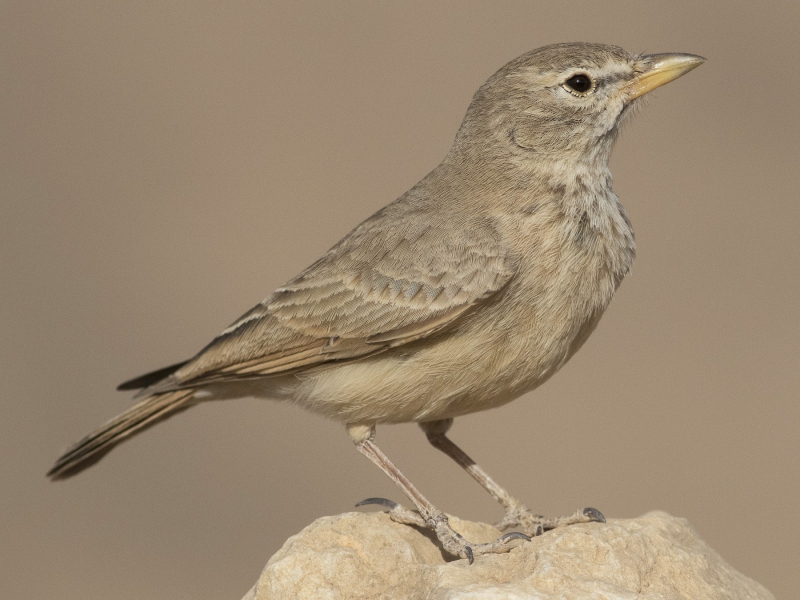
eBird 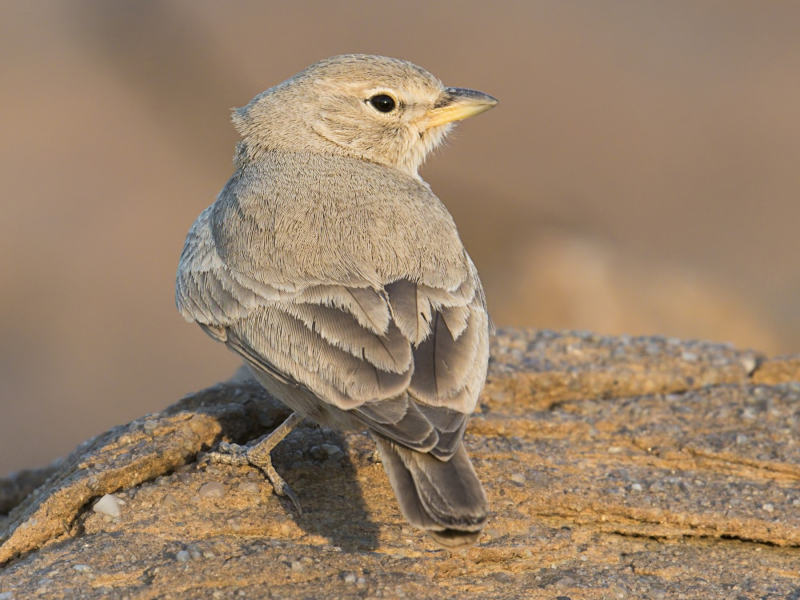
eBird -
The Gila Woodpecker (Melanerpes uropygialis) is a medium-sized woodpecker of the desert regions of the southwestern United States and western Mexico. In the U.S., they range through southeastern California, southern Nevada, Arizona, and New Mexico. This woodpecker's habitat consists of low desert scrub typical of the Sonoran Desert, as well as arroyos (washes) and small towns.
This bird has a zebra-like pattern of black and white spots and bars on its back and wings. The head, belly, throat, and neck are all a tan-gray tint. The top of the male's head is covered by a tiny red hat. Juveniles and females are similar, but neither has the adult male's crimson cap. In flying, white wing patches are seen. White bands can be seen on the center tail feathers of the dark tail. The birds are 20 to 25 cm long.
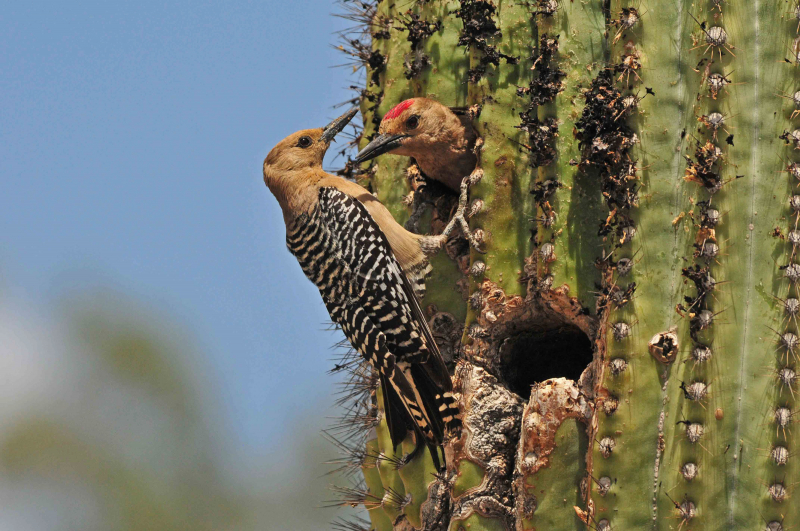
National Audubon Society 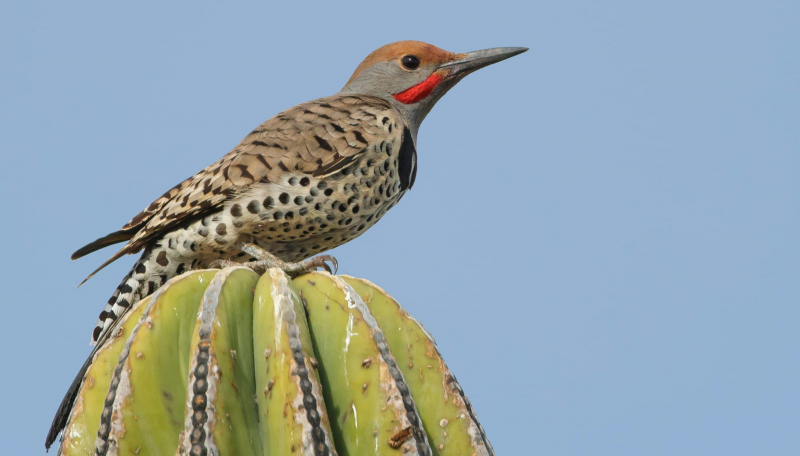
Kidadl -
The enormous, flightless Ostrich can be found exclusively in Africa. The adult male ostrich, which is the largest living bird in Africa, may grow to a height of 2.75 meters and a weight of more than 150 kilograms. The female is somewhat smaller. While females are primarily brown in color, males are primarily black in color with white plumes on their wings and tails. Depending on the season, ostriches can be spotted alone, in couples, in small flocks, or in massive gatherings. Ostriches, one of the adaptable Sahara Desert species, can run at a speed of 40 mph, which puts them among the world's fastest land animals. This speed is comparable to that of gazelles.
The species is capable of traveling long ways that help them to spot and avoid predators. They typically defend themselves by kicking their longs when attacked. They adore eating seeds, roots, and leaves. They are farmed worldwide, particularly for their feathers as they are used as decoration and feather dusters. Their skin is also used for leather products.
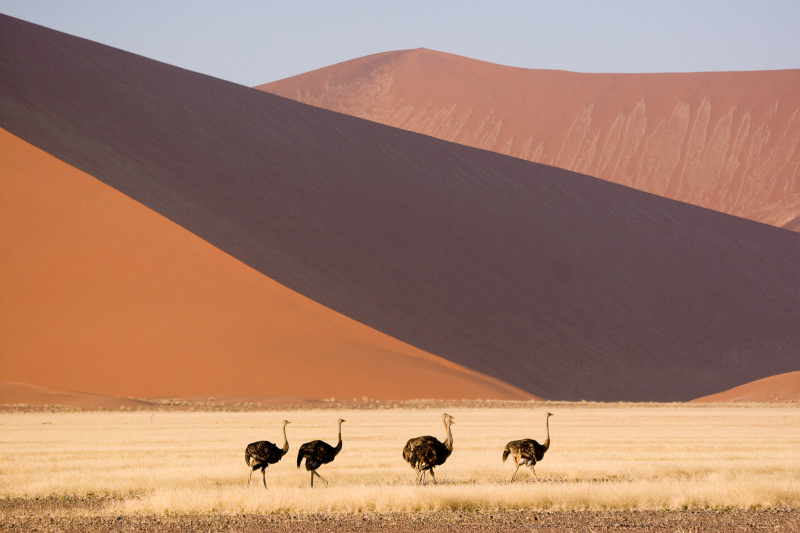
Wikimedia Commons 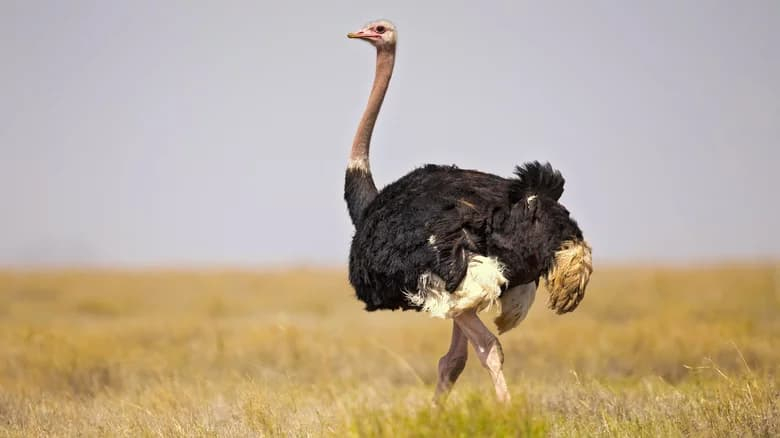
Pinterest -
The Cactus Wren (Campylorhynchus brunneicapillus) is a species of wren endemic to the deserts of the southwestern United States and northern and central Mexico. Its common name derives from their frequenting desert cactus plants such as the saguaro and cholla, building nests, roosting, and seeking protection from predators among them. It builds its large, spherical nests out of plant material and lines them with feathers. Instead of migrating, they create and protect the boundaries around their nests, where they spend the entire year.
It is the biggest wren in the United States and the official bird of Arizona. Its brown feathers are marked with black and white dots. It has a recognizable white eyebrow that extends all the way down to the nape of the neck. While the underparts are cinnamon-buff in hue, the chest is white. The two sexes look alike. Both the tail and the flight feathers have black-and-white barred patterns. Their song has been compared by some ornithologists to the sound of a car engine that won't start because it is a harsh, scratchy chirrup. The birds' diet, which consists primarily of insects but also contains some plant debris, allows them to meet their water needs because they have successfully adapted to their native desert environment.
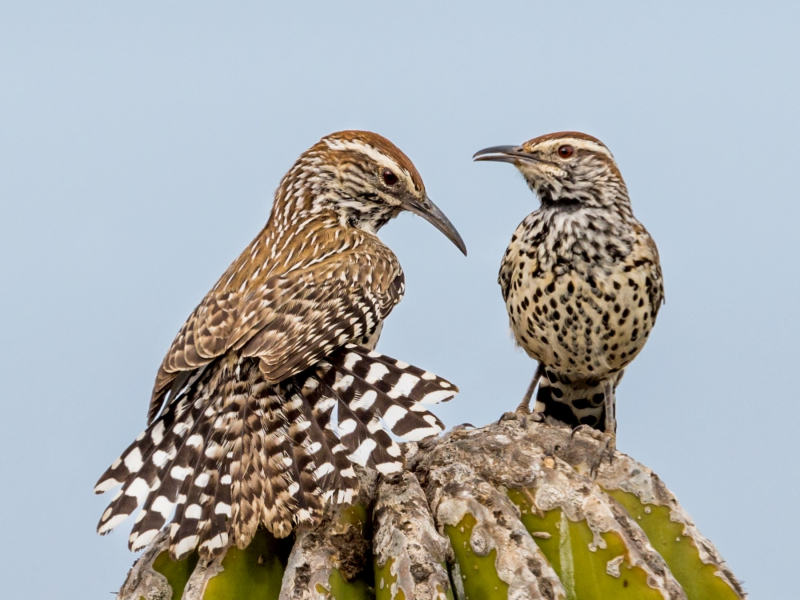
eBird 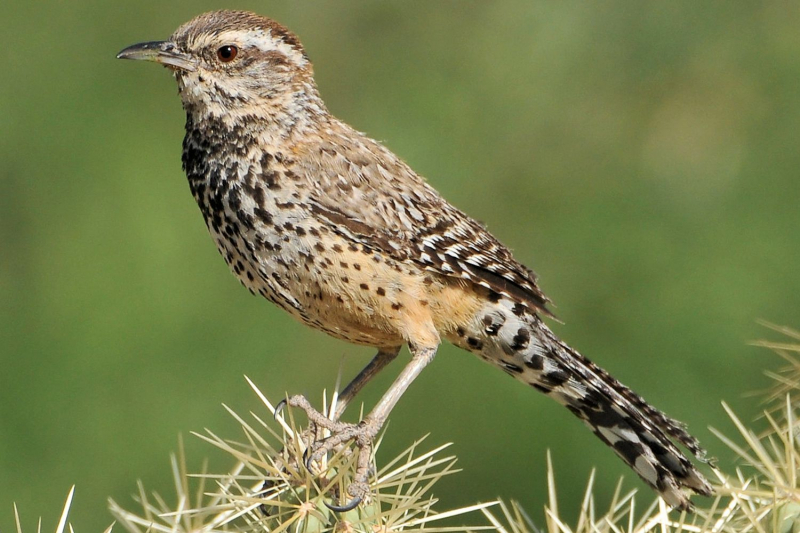
The Spruce -
The Verdin (Auriparus flaviceps) is a species of penduline tit. It is the only species in the genus Auriparus and the only representative of the old world family Remizidae to be found in North America. They are insectivorous, continuously foraging among the desert trees and scrubs. Verdins occasionally attempt to use hummingbird feeders to get sugar water, consume the hard and soft mast of numerous trees and shrubs in addition to a wide variety of microscopic insects, including adults and larvae.
It is an extremely tiny bird. It is one of the tiniest passerines in North America, measuring 11 cm, and is comparable in size to the American bushtit. Adults have a rufous shoulder patch and a brilliant yellow head, in addition to its gray overall color (the lesser coverts). It has a bill that is quite pointed, unlike the tits. Juveniles lack the rufous shoulder patch and golden head, and their bodies are a pale gray color. The short bill's base is thick at the head and tapers sharply at the tip.
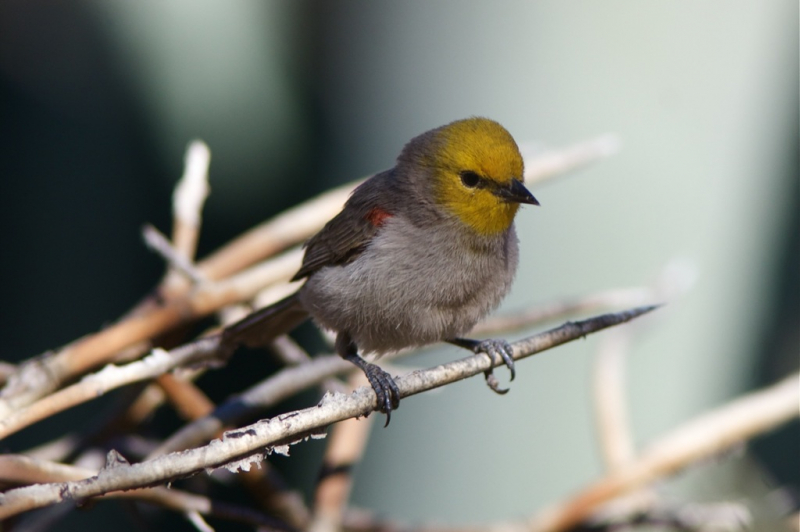
iNaturalist 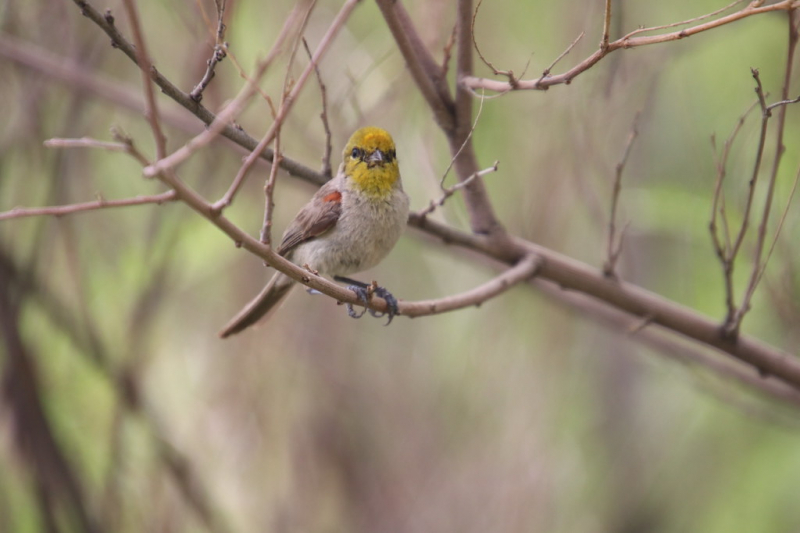
Flickr -
The Lucifer Sheartail or lucifer hummingbird (Calothorax lucifer) is a medium-sized hummingbird with short wings, a white streak behind its eye, and a long, curved bill. The male has a long, magenta gorget, a forked, dark tail, green crown, and white underparts. The female is larger, has duller plumage, a paler throat, and an underbelly of white or buff feathers that are typically trimmed in red.
It is found in deserts and dry regions with agave plants in the southwestern United States, from southwest Texas to southeastern Arizona, and in central and northern Mexico. Additionally, it can be discovered on the Madrean sky islands at the northern tip of Mexico's Sierra Madre Occidental. Its preferred habitat is typically found at elevations of 3,500–5,500 feet (1,100–1,700 m) in canyons, on mountain slopes, and in dry washes with desert plants including cactus and shrubs. The migratory birds head to central Mexico in the winter. The diet consists mainly of nectar from agave and colorful desert flowers, spiders, and small insects
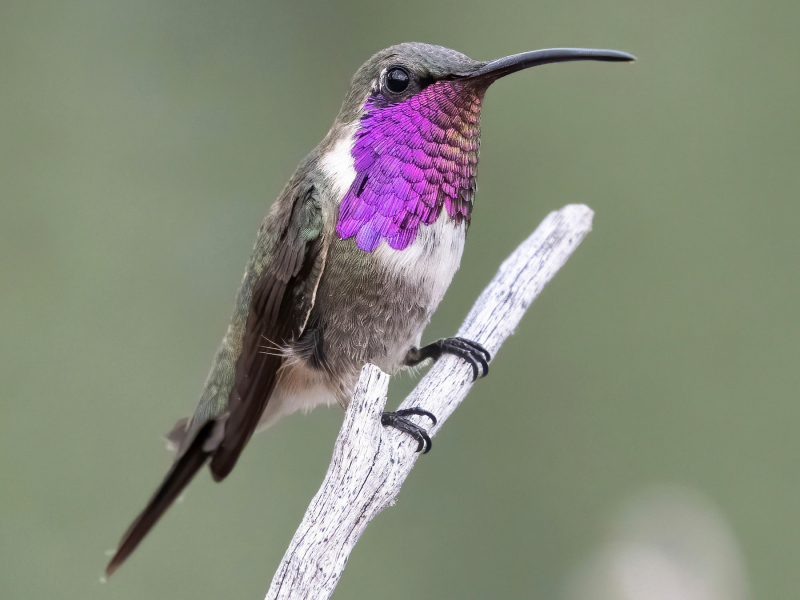
eBird 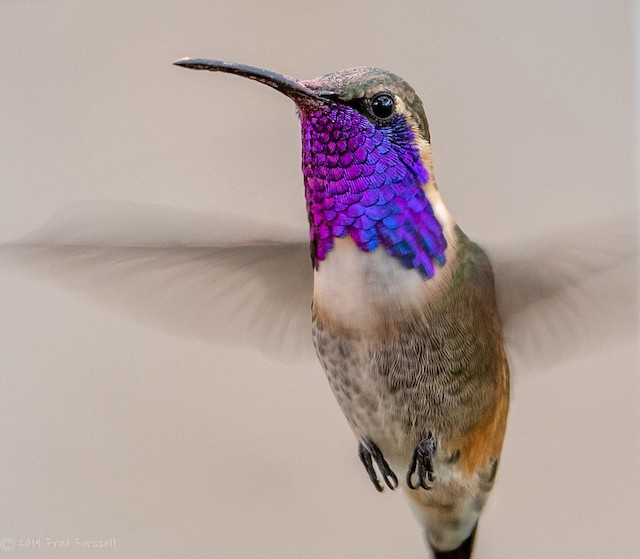
eBird -
The Rosy-Faced Lovebird (Agapornis roseicollis), also known as the rosy-collared or peach-faced lovebird, is a species of lovebird native to arid regions in southwestern Africa such as the Namib Desert. These birds, who chirp constantly and loudly, are gregarious creatures who frequently gather in little groups in the wild. They consume food all day long and frequently bathe. Lovebirds are well known for their unique sleeping posture, in which they sit side by side and turn their faces inward. Additionally, it is well known that females fly significant distances back to build nests after tearing raw materials into long strips and "twisty-tying" them to their backs. In the pet business, they are typical.
The rosy-faced lovebird is a little bird, measuring 17 to 18 cm in length, with average wing and tail lengths of 106 and 44 to 52 mm, respectively. Wild birds have a blue rump and a green body. The forehead and area above the eye are the darkest parts of the pink face and throat. The iris is brown, the legs and feet are grey, and the bill is colored like a horn. Compared to the A. r. catumbella, the A. r. roseicollis has a paler pink color. Young birds have a brownish base to their beak, a pale pink face, and throat, and a greenish fore, and crown. Male and female birds have the same plumage.
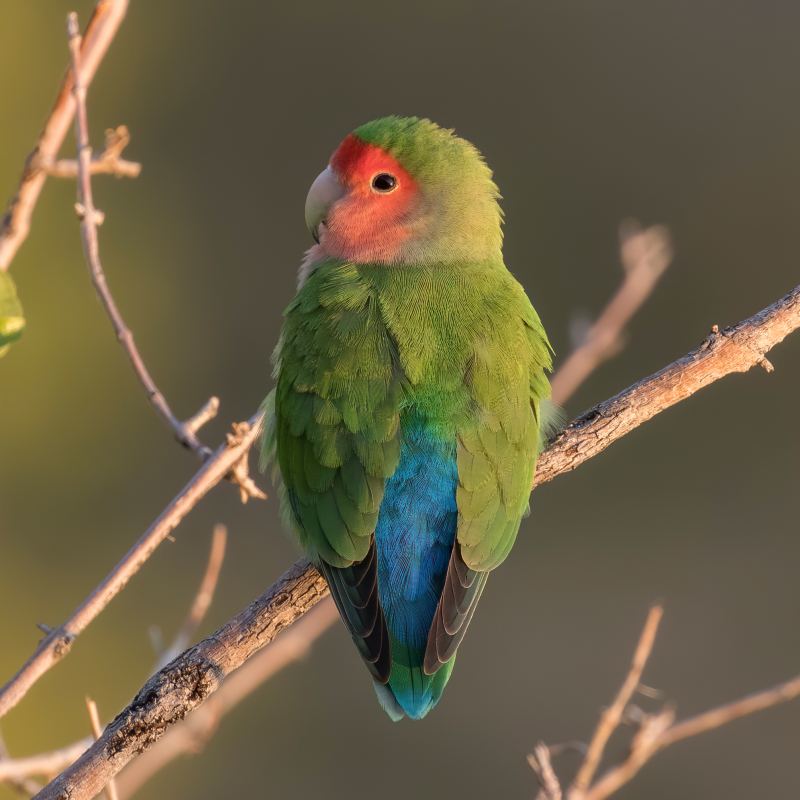
Wikipedia 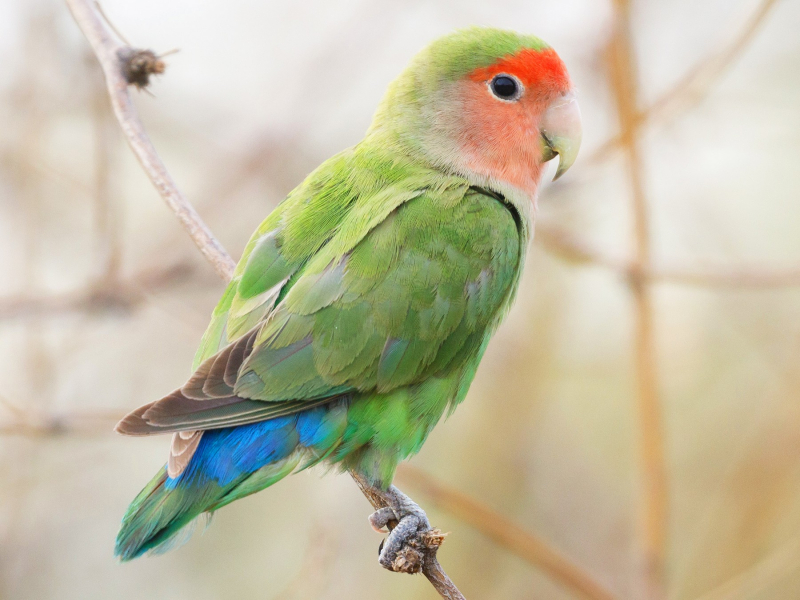
eBird -
The Greater Roadrunner is a long-legged member of the cuckoo family that lives in Mexico and the Southwest U.S. They do well in the desert regions of the Southwest. These birds can run and walk on the ground; they only fly when absolutely necessary. When pursuing prey, it may run up to 15 miles per hour, similar to a lizard that runs quickly. On occasion, they may outpace people or even kill rattlesnakes. Insects, spiders (including black widows), tarantulas, centipedes, scorpions, mice, small birds, including hummingbirds, and especially lizards and small snakes are among the small animals that it primarily eats.
Roadrunners have white tail tips that extend up to two feet from their bill. They have speckled plumage and a bushy blue-black crown. They blend quite well with the sand dunes thanks to their colors. They release a viscous, salty fluid through a particular gland located in front of each eye. They eliminate waste in this way so that little water is released from their body.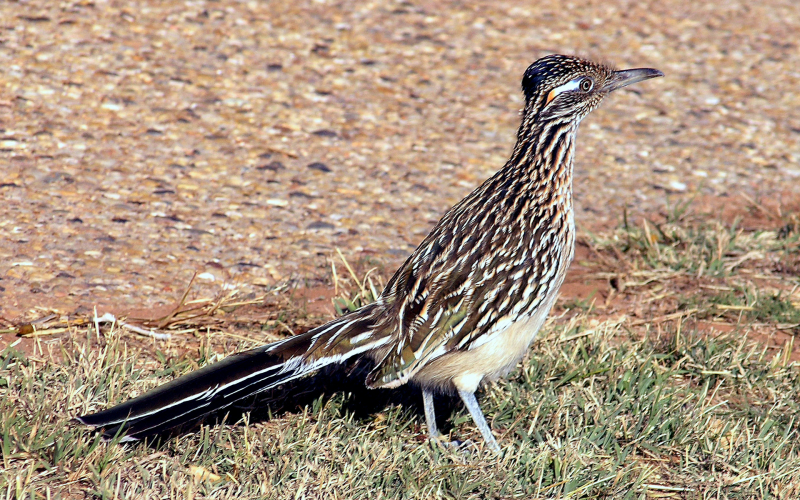
Wikipedia 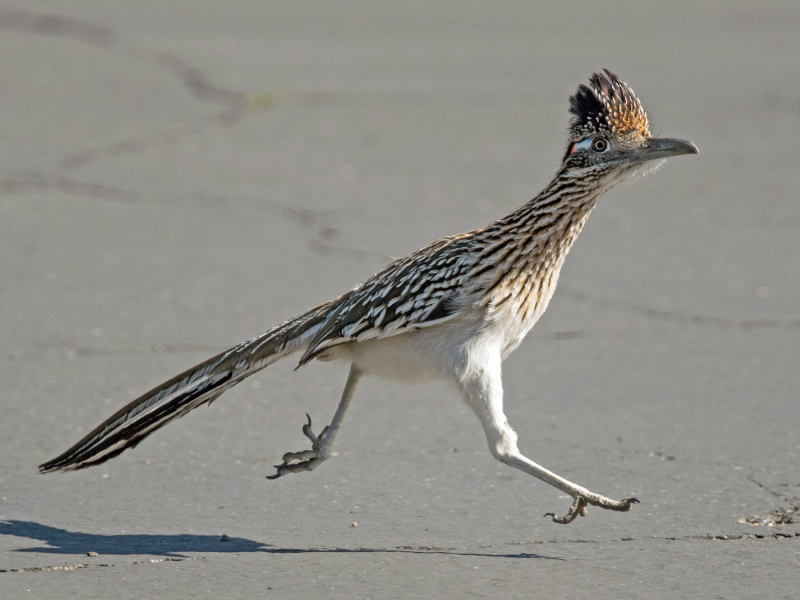
eBird -
The Pin-Tailed Sandgrouse (Pterocles alchata) is a medium-large bird in the sandgrouse family. The pin-tailed sandgrouse lives in open, stony terrain, semiarid desert edges, treeless plains, and sporadically dried-out mud flats. It loves sandy soils and is far less dependent on vegetation cover than the black-bellied sandgrouse (Pterocles orientalis), which has a similar range. In winter, it may visit the plowed or fallowed ground. It does not occur at elevations above about 1,000 meters (3,300 ft).
The pin-tailed sandgrouse is about 35 centimeters long. Its upper sections and head are a yellowish-green color. White underparts with a chestnut breast band dividing the belly from the green neck make up this species. Although the two sexes are somewhat similar, the female can hide better and has a shorter tail than the male. This gregarious species breeds on dry open treeless plains and similar habitats. Its nest is a ground scrape into which two or three cream-colored eggs with cryptic markings are laid. Both sexes incubate the eggs.
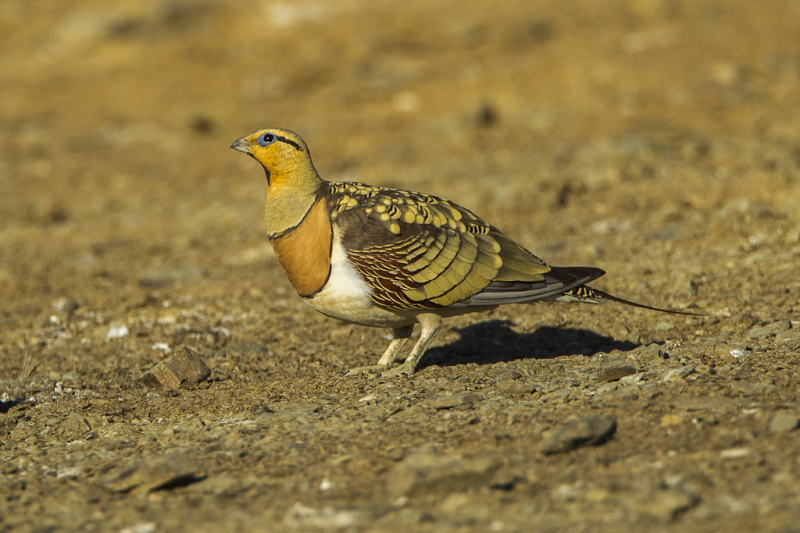
Wikipedia 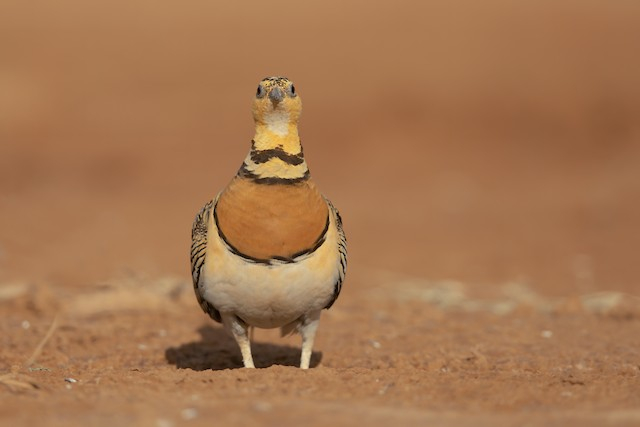
eBird












